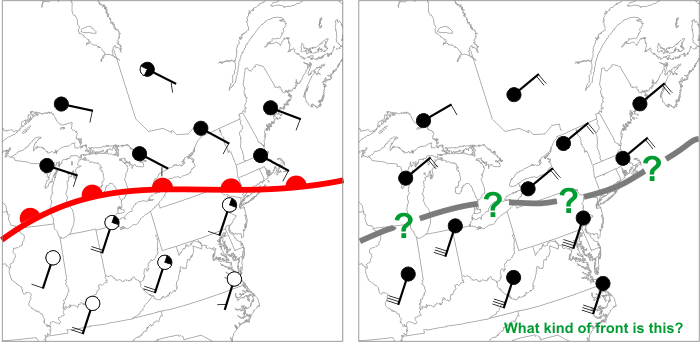

The tropical Atlantic, Caribbean, Gulf of Mexico, and the tropical Pacific, which are uniformly warm and moist. Those areas producing air masses which enter the fireoccurrence regions of North America are:

Ocean areas, snow- or ice-covered land areas, and wide desert areas are common source regions. The region where an air mass acquires its characteristic properties of temperature and moisture is called its source region. In this chapter, we will consider first the different types of air masses and the weather associated with them, and then the different kinds of fronts and frontal weather. Frontal zones, where lighter air masses are forced over denser air masses, are regions of considerable weather activity. Where two or more air masses come together, the boundary between them may be quite distinct it is called a front. These variations, however, usually follow a sequence that may be quite unlike the weather events in an adjacent air mass. Weather within an air mass will vary locally from day to day due to heating, cooling, precipitation, and other processes. The depth of the region in which this horizontal uniformity exists may vary from a few thousand feet in cold, winter air masses to several miles in warm, tropical air masses. Within horizontal layers, the temperature and humidity properties of an air mass are fairly uniform. Air within these high-pressure cells, resting or moving slowly over land or sea areas that have uniform properties, tends to acquire corresponding characteristics-the coldness of polar regions, the heat of the tropics, the moisture of the oceans, or the dryness of the continents.Ī body of air, usually 1,000 miles or more across, which has assumed uniform characteristics of temperature and moisture, is coiled an air mass.Ī body of air, usually 1,000 miles or more across, which has assumed uniform characteristics, is called an air mass. Usually, these regions have uniform surface temperature and moisture characteristics. In chapter 5 we learned that in the primary and secondary circulations there are regions where high-pressure cells tend to form and stagnate. Formation and Modification of Air Masses.

But if it is dry, the fire weather may become critical, if only for a short time. If the frontal passage is accompanied by precipitation, the fire weather may ease. When one air mass gives way to another in a region, fire weather may change abruptly-sometimes with violent winds-as the front, or leading edge of the new air mass, passes. As an air mass moves away from its source region, its characteristics will be modified, but these changes, and the resulting changes in fire weather, are gradual from day to day. These elements will be altered by local conditions, to be sure, but they tend to remain overall characteristic of the air mass. The weather within an air mass-whether cool or warm, humid or dry, clear or cloudy-depends on the temperature and humidity structure of the air mass. The day-to-day fire weather in a given area depends, to a large extent, on either the character of the prevailing air mass, or the interaction of two or more air masses.


 0 kommentar(er)
0 kommentar(er)
